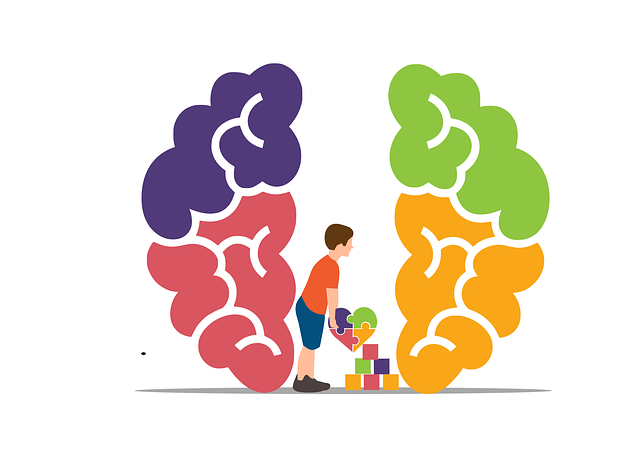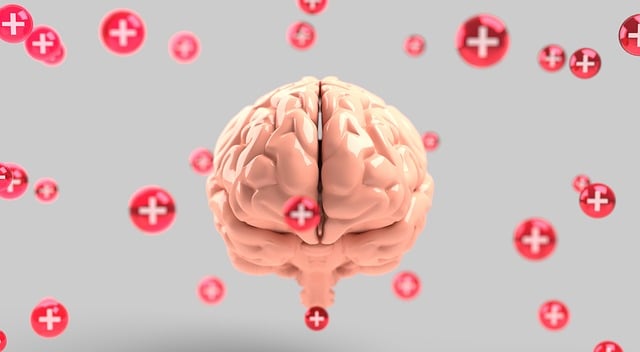In mental health practice, understanding risk for therapy for young adults and geriatrics requires assessing internal and external factors through comprehensive, age-specific risk assessment tools. Strategies tailored to these populations include positive thinking, mood management, compassion cultivation, and emotional regulation techniques. For young adults, interventions focus on coping mechanisms, self-care, and resilience-building; while geriatrics need accessible education and tailored self-care routines addressing physical capabilities and social isolation. Evidence-based assessment techniques and dynamic intervention strategies empower clients with proactive mental health management skills, fostering long-term resilience. Regular training and workshops ensure professionals stay current, enabling personalized care tailored to each client's evolving therapy for young adults and geriatrics needs.
Mental health professionals must navigate complex risks daily, from client vulnerability to ethical dilemmas. This article offers a comprehensive guide to risk management planning, catering to both therapy for young adults and geriatrics. We explore essential strategies, such as tailored risk assessment, effective intervention techniques, and continuous improvement methods. By understanding risk dynamics across age groups, professionals can enhance client safety and foster positive outcomes in diverse therapeutic settings.
- Understanding Risk in Mental Health Practice: A Comprehensive Overview
- Tailoring Risk Management Strategies for Young Adults vs Geriatrics
- Implementing Effective Risk Assessment and Intervention Techniques
- Continuous Improvement: Monitoring and Adapting Your Risk Management Plan
Understanding Risk in Mental Health Practice: A Comprehensive Overview

In mental health practice, understanding risk goes beyond identifying potential hazards. It encompasses a comprehensive evaluation of factors that could impact client outcomes, encompassing both internal and external variables. For therapists catering to young adults or geriatrics, this includes assessing clients’ psychological resilience, coping mechanisms, and any pre-existing conditions that might influence their emotional well-being. Risk management planning must consider the unique needs of these populations, such as the challenges faced by younger individuals navigating identity formation and older adults dealing with age-related changes.
Therapy for young adults often involves fostering positive thinking and mood management techniques to counteract the pressures of adolescence. Similarly, compassion cultivation practices have been shown to be effective in both geriatric and younger clients, promoting emotional regulation and enhancing therapeutic relationships. Incorporating these strategies into risk management plans can mitigate potential issues, ensuring a more holistic and supportive approach for all patients.
Tailoring Risk Management Strategies for Young Adults vs Geriatrics

When developing risk management plans, mental health professionals must consider the unique needs and challenges faced by different age groups. Young adults and geriatrics require tailored strategies due to distinct factors influencing their mental well-being. For instance, young adults often grapple with stress related to education, careers, and identity formation, necessitating interventions focused on coping mechanisms and self-care practices. Incorporating activities that foster resilience and promoting healthy lifestyle choices can significantly enhance their ability to manage risks effectively.
On the other hand, geriatrics may face challenges such as age-related cognitive decline, social isolation, and chronic illnesses, which demand a more nuanced approach. Effective risk management for this demographic involves educating them on mental health awareness and self-care routine development tailored to their physical capabilities. Mental health education programs designed with an aged audience in mind should focus on simple yet impactful strategies, ensuring accessibility and practicality while empowering geriatrics to take charge of their mental health.
Implementing Effective Risk Assessment and Intervention Techniques

Effective risk management in mental health care begins with comprehensive risk assessment tools tailored to diverse populations. For therapy providers catering to young adults and geriatrics, this involves screening for specific risks like substance abuse, suicidal ideation, or cognitive impairments unique to each age group. Integrating evidence-based assessment techniques ensures accurate identification of vulnerabilities.
Intervention strategies should be equally dynamic. Encouraging clients to develop coping skills through psychotherapy, group support, or community outreach program implementation can mitigate risks. Moreover, self-awareness exercises targeted at individual needs foster resilience and promote proactive mental health management. These tailored approaches not only address immediate concerns but also empower individuals with long-term coping mechanisms.
Continuous Improvement: Monitoring and Adapting Your Risk Management Plan

Mental health professionals must embrace continuous improvement when it comes to risk management planning. Regularly reviewing and updating your risk assessment strategies is key, especially as the field of mental health evolves with new research and therapeutic techniques. By staying current, therapists can adapt their plans to better support diverse client populations, such as young adults and geriatrics, who may present unique challenges.
Implementing a robust Mental Health Education Program that incorporates Self-Esteem Improvement and Stress Management techniques can empower both professionals and clients. Regular training sessions and workshops ensure therapists stay equipped with the latest evidence-based practices, fostering an environment where risk mitigation is an ongoing process. This dynamic approach allows for personalized care tailored to each client’s evolving needs.
Mental health professionals must navigate complex risks in their practice, especially when catering to diverse populations like young adults and geriatrics. By understanding risk factors unique to each demographic, tailoring management strategies accordingly, and continuously improving assessment techniques, therapists can ensure safe and effective care. Implementing these risk management practices for both therapy for young adults and geriatrics is essential to fostering a secure therapeutic environment and enhancing patient outcomes.








